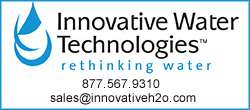|
|

|
  

9/4/2024
WT Staff
 Have knowledge of a spill? Drinking water questions or concerns? Have knowledge of a spill? Drinking water questions or concerns? Give us a call at 877-52-WATER (877-529-2837), or email us at info@wtny.us
September 4, 2024 731 am EDT
Reporting spills in New York
Hazardous Materials Files from NY Department of Environmental Conservation
Accidents happen, contaminants are released/discharged from all manner of sources, industrial, municipal, residential. Whether intentional or accidental, spills can reach water bodies, including drinking water sources. Report a Spill Line - 1-800-457-7362 responds to more than 15 thousand calls per year in New York State alone. Spills of oil and gas products are by far the most common report. Toxics regulated by State and US laws, according to the NYS DEC, "even small releases have the potential to endanger public health and contaminate groundwater, surface water, and soils." See our coverage of a highly flammable chemical spill in Manhattan last month . Even spilled milk can be harmful if it reaches a water body in quantity, read more about a recent incident of spilled milk impacting an Ohio creek.
Under State law, petroleum and hazardous chemical spills that can impact the waters of the state must be reported by the spiller (and, in some cases, by anyone who has knowledge of the spills). Report a Spill Line - 1-800-457-7362
WT HAB Tracker from the satellite monitoring program of the NOAA National Centers for Coastal Ocean Science(NCCOS), Cyanobacteria Assessment Network (CyAN) and State sources where available
The first full week of September started out with 400 active HABs confirmed Labor Day. By midweek, 385 HABs remain on the active notifications panel, more than half of these occurring in half a dozen water bodies in the Finger Lakes region. Seneca Lake alone accounts for more than 80 blooms along 38 miles. Browns Pond returns to the actively impacted water bodies list since our last update. The latest impacted water body list is available here.
A satellite image of Lake Champlain supplied by the NCCOS gives added insight to the HAB situation, the full color image analyzed with sensors revealing concentration bluegreen cells per ml. A higher concentration bloom can indicate presence of cyanotoxin, guidingng local environmental and public health where to sample, and test for the most common toxins. US EPA Health Advisories indicate a maximum level for cyanotoxins in recreational and in drinking water where no harm to health would be expected over a ten day period of consumption. Levels measured above this guidance may lead local authorities to post beach advisories to warn the public. WTNY covered State and US EPA guidance on cyanotoxins in drinking water and recreational water, here earlier in the season.
The latest image of Lake Champlain was snapped September 3, a clear view to the water. The Baie Missisquoi HAB is not visible again in this capture, the widespread, high concentration bloom first noted in June has suddenly vanished. St Albans Bay HAB remains widespread shore to shore at 700 to 800 thousand cells per ml, the Lake Carmi HAB is clearly observed around 700 to 800 thousand cells. The wind speed is not recorded on these images, if over 4 mph the wind could be causing HABs to submerge and mix down into the water column. A recent image showed Baie Missisquoi HAB along the north shore in Canada at 2 to 3 million cells per ml by the concentration color scale. See the NCCOS color images, here.
|
|
|
|
All rights reserved 2025 - WTNY - This material may not be reproduced in whole or in part and may not be distributed,
publicly performed, proxy cached or otherwise used, except with express permission.
|
|